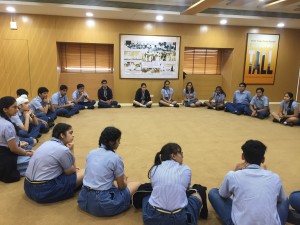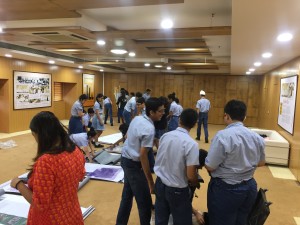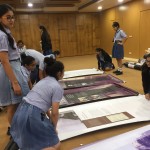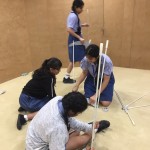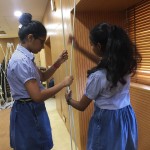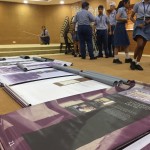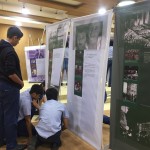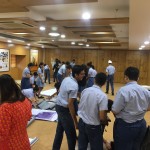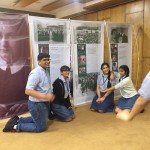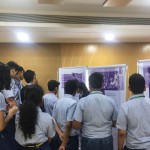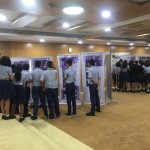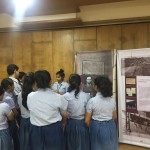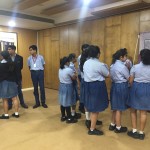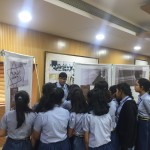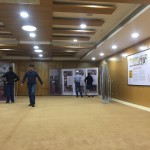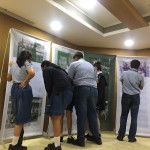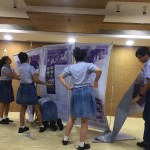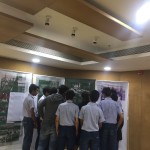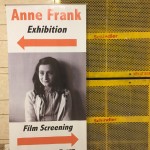27 August 2018
I approached the World Trade Centre at 8.30 a.m., all set to conduct a regular, routine day of workshopping with a group of twenty-five students. Having facilitated the Peer Guide Training, which is part of the Anne Frank—A History for Today project, several times, the only thing I was really concerned about was the physical energy it would take to setup the exhibition.
We began the session five minutes before schedule since the students were visibly excited and restless to begin. The group comprised of class 9 and 10 from the R. N. Poddar School. The usual ice breaker was not necessary since they knew each other, but I anyway did start with an ice breaker since I needed to get familiar with their names and also wished to establish a light hearted tone before moving into the serious discussions.
So we did a round of introductions with each one of the participants demonstrating a dance move. Sufficiently energized post some incredible moves having been demonstrated, we sat down for a round of discussion around the Diary of Anne Frank, the Holocaust and the aims and objectives of this project.
For me, this discussion round turned out to be quite an eye opener, making me step out of the complacency that had involuntarily crept in due to having conducted this workshop several times. The students were incredibly knowledgeable—not only about the story of Anne Frank, which is part of their syllabus in class 9—but also about the Holocaust, the historical background and the very complicated human angle from the victims, perpetrators, helpers and bystanders point of view. Very passionate about the subject, their reading and exposure to the topic ranged from a wide variety of films to serious literature, including writings of Primo Levi. Later I learned that the response for call for participation to this workshop was so huge that the teachers conducted a test to select the twenty-five who finally got the opportunity.
We could have carried on the discussion through the entire day. But there was work to be done—the exhibition needed to be constructed, the layout needed to be planned and we had to be ready for the opening in just six hours. So the boxes were opened up and one panel was constructed by me to demonstrate how it was done. But before proceeding further with this task it was important to talk about the concepts of space, movement and visitor comfort and expectations. This too did not need much doing as unlike my earlier experience, most of these students were regular visitors to art galleries. Soon we moved on to constructing the panels. Working in small groups the task was achieved fairly quickly and efficiently.
Setup done, layout done, lunch done, the participants settled into quietly and thoroughly getting familiar with the content on the panels. An hour or so later, we got together for circle time again and each students was asked to share what they felt about the exhibition. At this point the unanimous response was ‘but there is nothing new here, all of this is in our textbook!’ Now this I thought was a serious problem. We cannot have a group of twenty five uninspired peer guides!
So I asked them to spend some time introspecting. ‘There must be something that is a new reality for you, a new experience, a new feeling. Think. And then share just one thing. Just one’, I said. And so it began, the exploration, quietly and sincerely.
‘The photos on the panels brought all that I had read so far elsewhere to life’ said Khushi
‘I knew about the concentration camps, but I didn’t know their names and I didn’t know there were so many’ said Gurbani
‘Six million was just a statistic. Today, looking at it through Anne’s experience it has become so real’ said Vidyarthi.
‘I learnt the names of the chemicals used to make the gas’ said Nicole
‘I understood that love for your country has nothing to do with your religious identity from the photo of Otto Frank in German Army uniform’ said
‘Looking at the Wannasee document that details the exact number of Jews in specific locations across Europe is a chilling reminder of the level of planning that was done’ said
. . . And so it continued and before we knew it we had over 25 ‘new’ things to discuss around the exhibition. ‘This’, I said to the students, ‘is the real essence of being a great guide. To translate your personal experience to the viewer so that each and every visitor you encounter is able to internalize Anne’s life story and the historical facts surrounding it, both of which will probably be familiar to all those who visit the exhibition. And above all to encourage them to think about the relevance of this today.’
The following day, the opening of the exhibition saw over 50 visitors. The Consul General of the Netherlands, Mumbai, Guido Tielman, Deputy Consul of Germany, Consul General of Israel, Mumbai and Mr Malik the Chief Communications Officer and ex Principal Secretary for the state of Maharashtra spoke passionately and eloquently about the importance of this project today.
—Megha Malhotra

